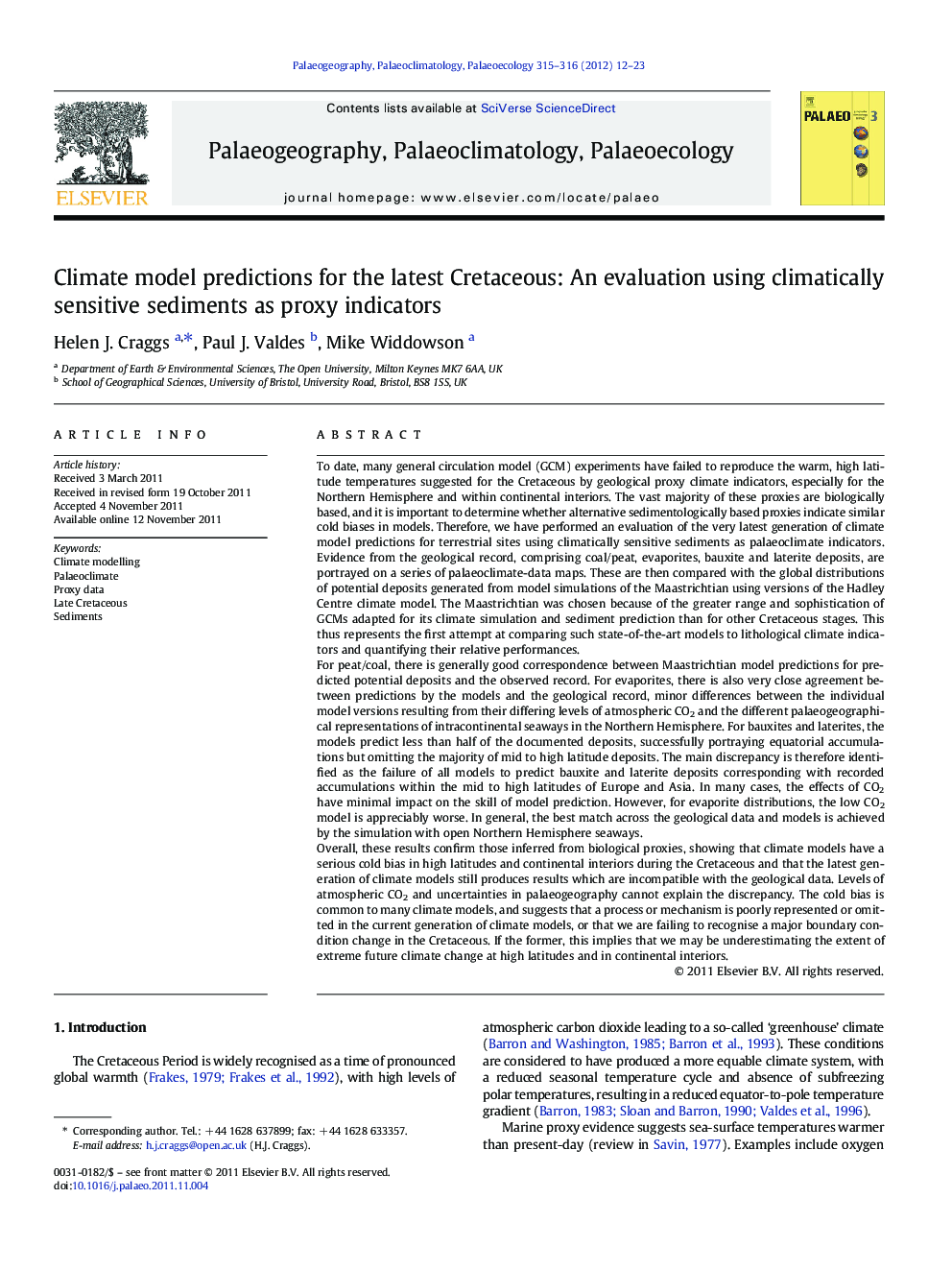| کد مقاله | کد نشریه | سال انتشار | مقاله انگلیسی | نسخه تمام متن |
|---|---|---|---|---|
| 4467044 | 1622241 | 2012 | 12 صفحه PDF | دانلود رایگان |

To date, many general circulation model (GCM) experiments have failed to reproduce the warm, high latitude temperatures suggested for the Cretaceous by geological proxy climate indicators, especially for the Northern Hemisphere and within continental interiors. The vast majority of these proxies are biologically based, and it is important to determine whether alternative sedimentologically based proxies indicate similar cold biases in models. Therefore, we have performed an evaluation of the very latest generation of climate model predictions for terrestrial sites using climatically sensitive sediments as palaeoclimate indicators. Evidence from the geological record, comprising coal/peat, evaporites, bauxite and laterite deposits, are portrayed on a series of palaeoclimate-data maps. These are then compared with the global distributions of potential deposits generated from model simulations of the Maastrichtian using versions of the Hadley Centre climate model. The Maastrichtian was chosen because of the greater range and sophistication of GCMs adapted for its climate simulation and sediment prediction than for other Cretaceous stages. This thus represents the first attempt at comparing such state-of-the-art models to lithological climate indicators and quantifying their relative performances.For peat/coal, there is generally good correspondence between Maastrichtian model predictions for predicted potential deposits and the observed record. For evaporites, there is also very close agreement between predictions by the models and the geological record, minor differences between the individual model versions resulting from their differing levels of atmospheric CO2 and the different palaeogeographical representations of intracontinental seaways in the Northern Hemisphere. For bauxites and laterites, the models predict less than half of the documented deposits, successfully portraying equatorial accumulations but omitting the majority of mid to high latitude deposits. The main discrepancy is therefore identified as the failure of all models to predict bauxite and laterite deposits corresponding with recorded accumulations within the mid to high latitudes of Europe and Asia. In many cases, the effects of CO2 have minimal impact on the skill of model prediction. However, for evaporite distributions, the low CO2 model is appreciably worse. In general, the best match across the geological data and models is achieved by the simulation with open Northern Hemisphere seaways.Overall, these results confirm those inferred from biological proxies, showing that climate models have a serious cold bias in high latitudes and continental interiors during the Cretaceous and that the latest generation of climate models still produces results which are incompatible with the geological data. Levels of atmospheric CO2 and uncertainties in palaeogeography cannot explain the discrepancy. The cold bias is common to many climate models, and suggests that a process or mechanism is poorly represented or omitted in the current generation of climate models, or that we are failing to recognise a major boundary condition change in the Cretaceous. If the former, this implies that we may be underestimating the extent of extreme future climate change at high latitudes and in continental interiors.
► Sedimentary proxies used quantitatively to evaluate latest Cretaceous climate models.
► Good correspondence between models and geological record for peat/coal and evaporites.
► Models fail to predict bauxites and laterites found in mid to high northern latitudes.
► Climate models have serious cold bias in high latitudes and continental interiors.
► In these regions current climate models may be underestimating future climate change.
Journal: Palaeogeography, Palaeoclimatology, Palaeoecology - Volumes 315–316, 15 January 2012, Pages 12–23